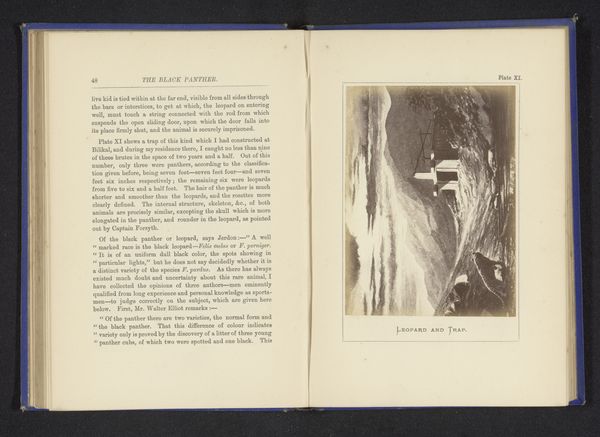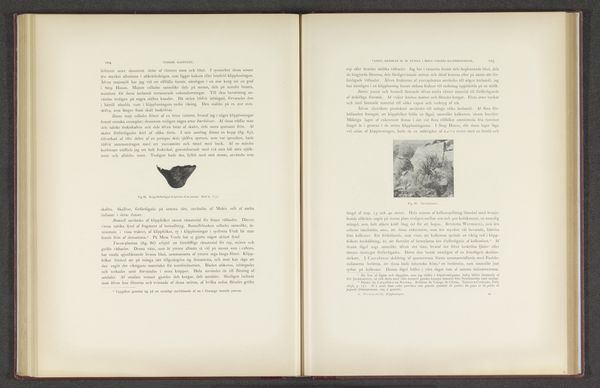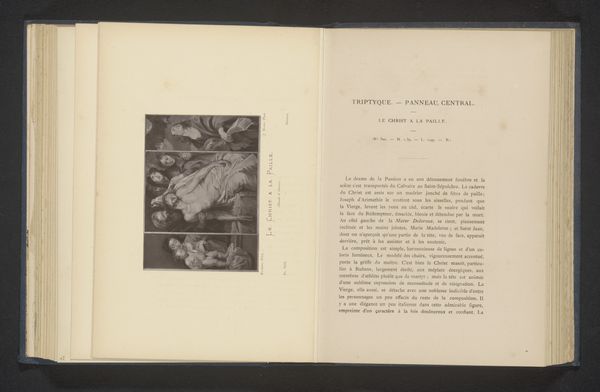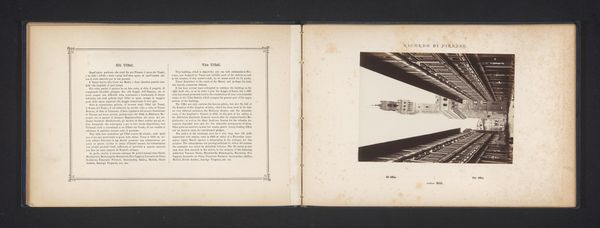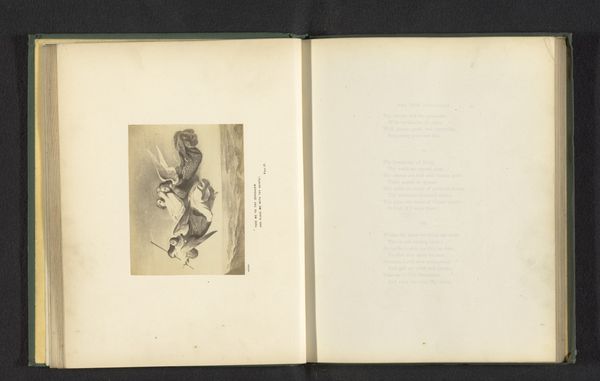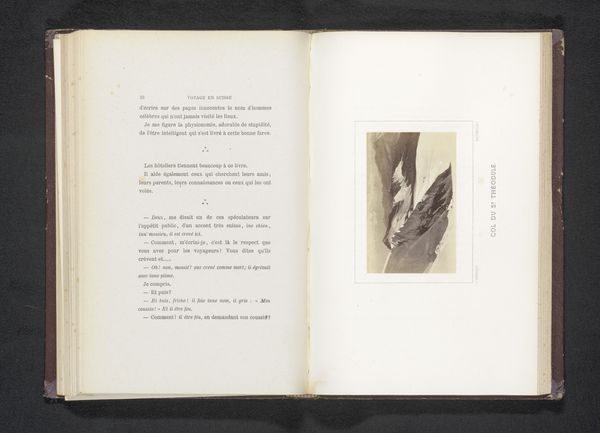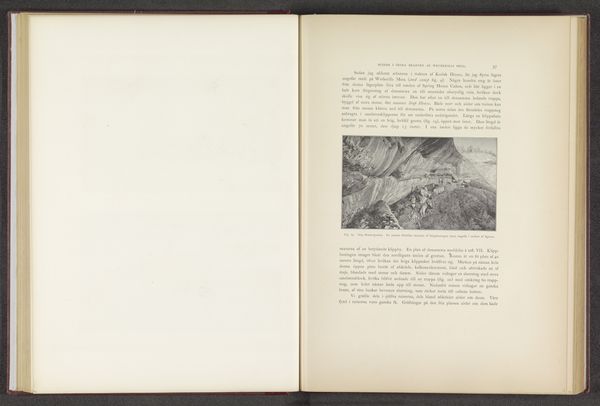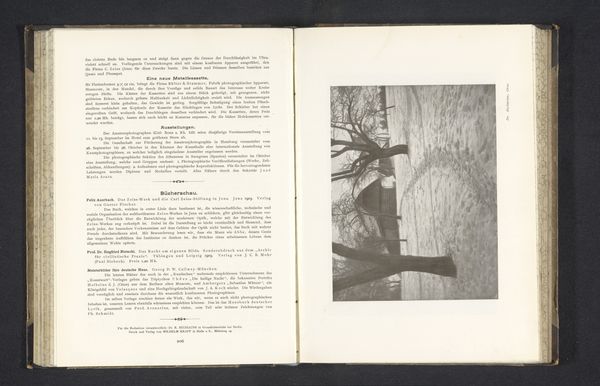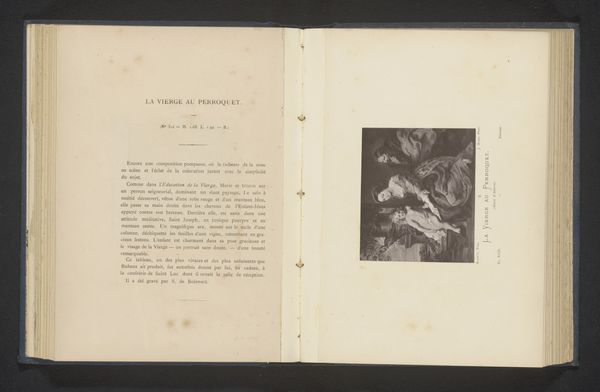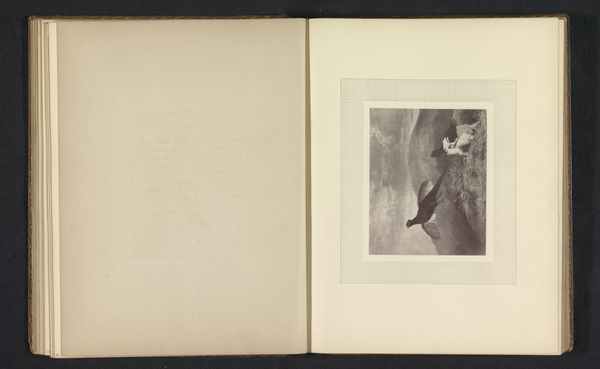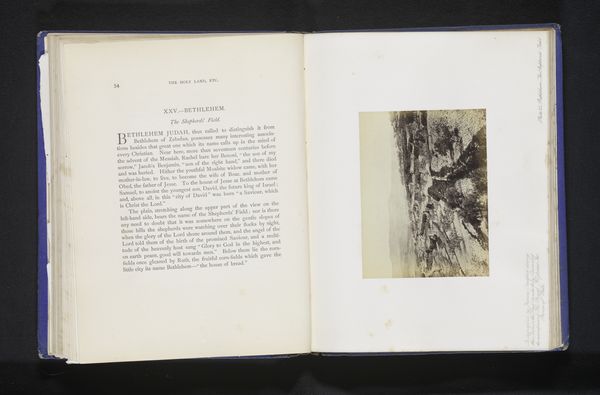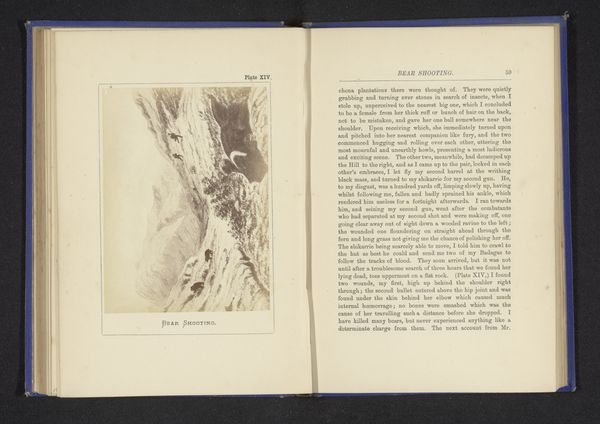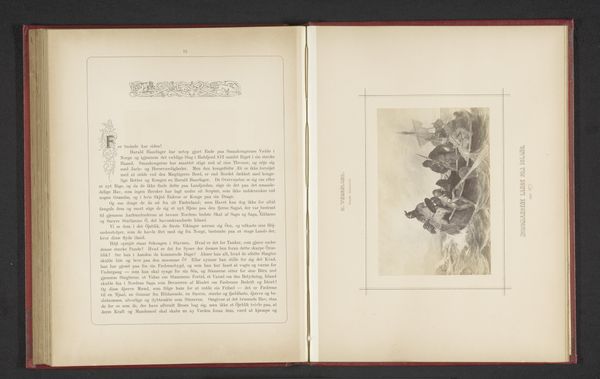
print, photography
#
portrait
# print
#
photography
Dimensions: height 197 mm, width 142 mm
Copyright: Rijks Museum: Open Domain
Editor: Here we have a photograph titled "Opgezette kop van een Indiase gazelle" by Arthur Lucas, created sometime before 1869. It looks to me like it's printed in a book. It has quite a stark and almost clinical feel. I'm wondering, Curator, what stands out to you when you look at this work? Curator: It is fascinating how this taxidermied gazelle head becomes an object of study through photography and its reproduction in print. Consider the historical context. This image emerges during a period of intense colonial expansion and scientific exploration. What do you think about the subject of hunting in this context? Editor: That makes me think about the colonial implications. Was the animal possibly collected as a trophy? The description seems very… detached. Curator: Precisely! The gazelle is reduced to a specimen, a type of scientific study and proof of dominion over nature, which also mirrors the power structures inherent in colonial enterprises. The very act of preserving and documenting, served to solidify a specific kind of cultural power. It transforms the creature into an object defined by a particular gaze. Editor: So, the photograph normalizes the practice of turning an animal into an object of scientific curiosity and colonial conquest. Does this relate to the emergence of natural history museums around the same time? Curator: Absolutely. These museums also displayed specimens, furthering this specific agenda, this desire to collect and categorise, shaping how the public understood their relationship with the natural world and the countries these artifacts came from. Editor: This makes me rethink what I initially thought was just a straightforward photograph. It carries a lot of loaded cultural information. Curator: It does indeed. It exemplifies how the display of art often reveals the dominant ideologies shaping society and the public understanding of its time. I hope that you and our listeners understand how we are implicated in these practices too when viewing this photograph.
Comments
No comments
Be the first to comment and join the conversation on the ultimate creative platform.
